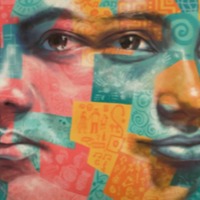
David
The Global Slavery Index estimated that in 2016 modern slavery in Sub-Saharan Africa accounted from approximately 13.6 percent of the world's total enslaves population. The issue of child soldiers remains a problem across the region. South Sudan has been experiencing a civil war since 2013 and it is estimated that round 19,000 children are serving in the ranks of armed forces and militia groups in the country. Young children, mostly young boys, are forced to abduct, rape and kill members of their own community under threats to their own lives. While continued international pressure has led to the freeing of over 200 child soldiers in April 2018, the number of children forced to fight continues to grow due to ongoing aggression in the region. David was captured and forced to fight for rebels in South Sudan at the age of 16 years old.
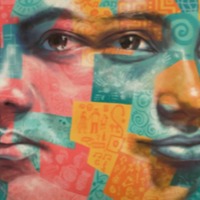
John C
The Global Slavery Index estimated that in 2016 modern slavery in Sub-Saharan Africa accounted from approximately 13.6 percent of the world's total enslaves population. The issue of child soldiers remains a problem across the region.South Sudan has been experiencing a civil war since 2013 and it is estimated that round 19,000 children are serving in the ranks of armed forces and militia groups in the country. Young children, mostly young boys, are forced to abduct, rape and kill members of their own community under threats to their own lives. While continued international pressure has led to the freeing of over 200 child soldiers in April, 2018, the number of children forced to fight continues to grow due to ongoing aggression in the region. John was recruited as a child soldier by rebels in South Sudan when he was 16 years old
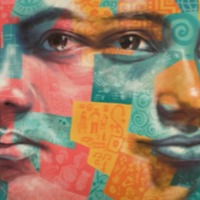
Charlotte Awino
Charlotte’s story explains how at the age of 14 years she was abducted from a boarding school and held captive for 8 years by the Lord's Resistance Army (LRA). Her mother Angelina Atyam never stopped speaking out and working for her release and that of thousands abducted children in Uganda – despite threats by the LRA. According to the United States Department of State Trafficking in Persons report 2017, some Ugandans abducted by the LRA prior to 2006 remain unaccounted for, and may remain captive with LRA elements in the DRC, Central African Republic, and the disputed area of Kafia Kingi, which is claimed by both Sudan and South Sudan.
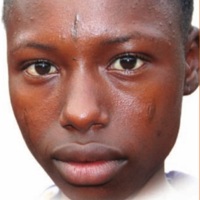
Susan
Susan was enslaved at the age of 16 as a child soldier in Uganda, where boys and girls as young as eight years old have been kidnapped by the Lord's Resistance Army (LRA) and forced to become child soldiers. UNICEF (United Nations Children’s Fund) estimates that as many as 10,000 children were taken in this way.
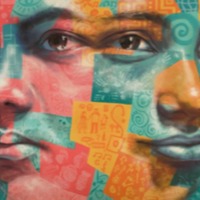
Santino
Thousands of women and children were taken into slavery during the decades of Sudan’s civil war, mainly from Northern Bahr El Ghazal and the Nuba Mountains. Slave-taking was revived in 1985 by the National Islamic government of Sudan primarily as a weapon against counterinsurgents in the South, and secondarily a way to reimburse its surrogate soldiers for neutralizing this threat. In 1989 the government created the Popular Defense Forces (PDF), militia trained to raid villages and take people as slaves. PDF recruits were allowed to keep whoever they captured, along with booty of grain and cattle. One study documents 12,000 abductions by name, while NGOs offer estimates ranging from 15,000 to 200,000. The slaves were often moved to large towns in the north on week-long journeys during which the women were repeatedly raped, and then sold to new masters who used them without pay for farming and sexual services. The peace process brought these PDF abductions to an end, but inter-tribal abductions continue in Southern Sudan. In addition, Sudanese children are used by rebel groups in the ongoing conflict in Darfur; Sudanese boys from the country’s eastern Rashaida tribe continue to be trafficked to the Middle East for use as camel jockeys; the rebel organization “Lord’s Resistance Army” has forcibly conscripted children in Southern Sudan for use as combatants in its war against Uganda; and the institution of chattel slavery continues in southern Darfur and southern Kordofan.Santino was ‘redeemed’ (bought out of slavery) by Christian Solidarity International (CSI), a Zurich-based international human rights organization, in 1999.
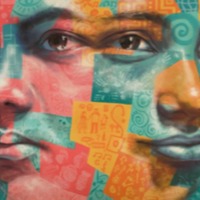
Marco
Thousands of women and children were taken into slavery during the decades of Sudan’s civil war, mainly from Northern Bahr El Ghazal (where the narrator was liberated) and the Nuba Mountains. Slave-taking was revived in 1985 by the National Islamic government of Sudan primarily as a weapon against counterinsurgents in the South, and secondarily a way to reimburse its surrogate soldiers for neutralizing this threat. In 1989 the government created the Popular Defense Forces (PDF), militia trained to raid villages and take people as slaves. PDF recruits were allowed to keep whoever they captured, along with booty of grain and cattle. One study documents 12,000 abductions by name, while NGOs offer estimates ranging from 15,000 to 200,000. The slaves were often moved to large towns in the north on week-long journeys during which the women were repeatedly raped, and then sold to new masters who used them without pay for farming and sexual services. The peace process brought these PDF abductions to an end, but inter-tribal abductions continue in Southern Sudan. In addition, Sudanese children are used by rebel groups in the ongoing conflict in Darfur; Sudanese boys from the country’s eastern Rashaida tribe continue to be trafficked to the Middle East for use as camel jockeys; the rebel organization “Lord’s Resistance Army” has forcibly conscripted children in Southern Sudan for use as combatants in its war against Uganda; and the institution of chattel slavery continues in southern Darfur and southern Kordofan.Marco was captured and taken by South Sudanese militia where he was sent to live with Jima Mahmoud. Marco was subjected to forced labour, forced to convert to Islam, and trained to become a soldier for the militia.
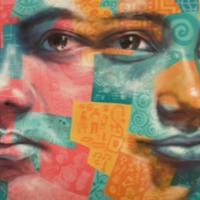
Manju
Manju was abducted and forced to work for a year as a child soldier in Sri Lanka at the age of 17, one of hundreds of thousands of children who participate in armies and armed groups in more than 30 countries around the world. The problem is most critical in Africa, where up to 100,000 children are estimated to be involved in armed conflict. Child soldiers also exist in Afghanistan, Burma, India, Indonesia, Iran, Iraq, Israel and the Occupied Palestinian Territories, though international law sets 18 as the minimum age for all participation in hostilities. In Sri Lanka, children as young as nine were abducted and used in combat by the Liberation Tigers of Tamil Eelam (LTTE) during its conflict with the Sri Lankan government, between 1983 and 2002. Children—most aged 14 or 15 and over 40 percent girls—were used for massed frontal attacks in major battles, and some between the ages of 12 and 14 were used to massacre women and children in rural villages. Others were used as human mine detectors, assassins and suicide bombers. A ceasefire was implemented in February 2002, this did not halt the LTTE’s use of child soldiers. Children were then more likely to be forcibly recruited: people saw no reason to give their children to the LTTE if they did not perceive themselves to be at risk from the government, and so the LTTE resorted to abduction. In 1994, one in 19 child recruits was abducted. By 2004, only one in 19 was a volunteer.
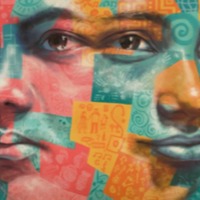
Giselle
In the Philippines, where three major insurgent groups have fought the Philippine military since the 1960s, there are an estimated 2000 child soldiers. The Communist-oriented New People’s Army, established in 1968, began an intense recruitment of children in the 1990s. By 2000, some 25 percent of new recruits were children, and more than ten percent of its regular combatants are now under 18. Parents volunteer children to serve as combatants and camp guards. The Moro Islamic Liberation Front allows the training of children as young as 12. Parents volunteer their children, seeing it as an observation of Islamic teaching, and Muslim youth organizations recruit students from schools and colleges. The Abu Sayyaf (“Bearer of the Sword”), a Muslim separatist group which appeared in the late 1980s, uses Islamic religion to draw minors into the movement, for use as combatants, human shields, and hostages.Giselle became a child soldier in the Philippines at the age of 15.
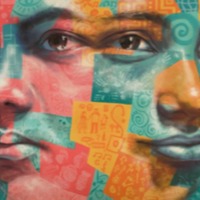
Dia
Dia was forced to join a guerilla group in Columbia for nine months at the age of 15, one of hundreds of thousands of children who participate in armies and armed groups in more than 30 countries around the world. The problem is most critical in Africa, where up to 100,000 children are estimated to be involved in armed conflict. Child soldiers also exist in Afghanistan, Burma, India, Indonesia, Iran, Iraq, Israel and the Occupied Palestinian Territories, though international law sets 18 as the minimum age for all participation in hostilities. Both sides engaged in Columbia’s 40-year-old conflict have used children: the government-backed paramilitary Autodefensas Unidas de Colombia, and the left-wing guerrilla groups Fuerzas Armadas Revolucionarias de Colombia (FARC) and Ejército de Liberación Nacional. Total estimates of the numbers of children fighting in paramilitaries and urban militias range from between 11,000 and 14,000. FARC has the largest number of minors, including several thousand under the age of 15. Women and girls constitute up to half of all recruits to the armed opposition groups and face pressure to enter relationships with male commanders. Children take part in combat, act as messengers, and lay explosives. Most are denied contact with their families.
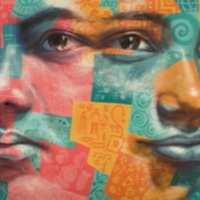
Denise
In the Philippines, where three major insurgent groups have fought the Philippine military since the 1960s, there are an estimated 2000 child soldiers. The Communist-oriented New People’s Army, established in 1968, began an intense recruitment of children in the 1990s. By 2000, some 25 percent of new recruits were children, and more than ten percent of its regular combatants are now under 18. Parents volunteer children to serve as combatants and camp guards. The Moro Islamic Liberation Front allows the training of children as young as 12. Parents volunteer their children, seeing it as an observation of Islamic teaching, and Muslim youth organizations recruit students from schools and colleges. The Abu Sayyaf (“Bearer of the Sword”), a Muslim separatist group which appeared in the late 1980s, uses Islamic religion to draw minors into the movement, for use as combatants, human shields, and hostages.Denise became a child soldier in the Philippines at the age of 16.
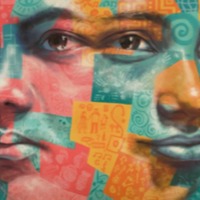
Vasanthi
Vasanthi became a child soldier in Sri Lanka at the age of 10. She was one of hundreds of thousands of children who participate in armies and armed groups in more than 30 countries around the world. The problem is most critical in Africa, where up to 100,000 children are estimated to be involved in armed conflict. Child soldiers also exist in Sri Lanka, Afghanistan, Burma, India, Indonesia, Iran, Iraq, Israel and the Occupied Palestinian Territories, even though international law sets 18 as the minimum age for all participation in hostilities.
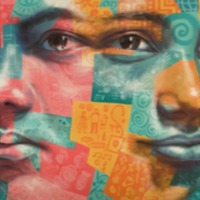
Sabitha-Jayanthi
Sabitha-Jayanthi became a child soldier in Sri Lanka at the age of 13. In Sri Lanka, children as young as nine have been abducted and used in combat by the Liberation Tigers of Tamil Eelam (LTTE). The LTTE used children as soldiers throughout its conflict with the Sri Lankan government, between 1983 and 2002. Children—most aged 14 or 15 and over 40 percent girls—were used for massed frontal attacks in major battles, and some between the ages of 12 and 14 were used to massacre women and children in rural villages. Others were used as human mine detectors, assassins and suicide bombers. A ceasefire was implemented in February 2002, but this didn’t halt the LTTE’s use of child soldiers. In fact, children were more likely to be forcibly recruited: people saw no reason to give their children to the LTTE if they did not perceive themselves at risk by the government, and so the LTTE resorted to abduction. In 1994, one in 19 child recruits was abducted. By 2004, only one in 19 was a volunteer.